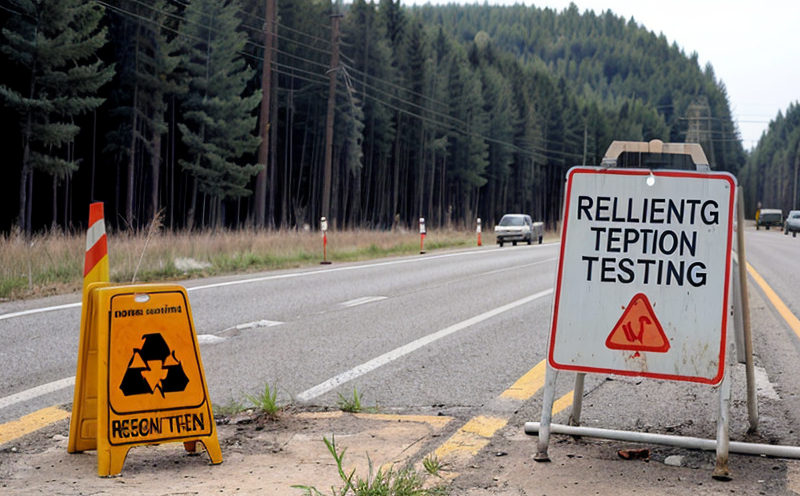ISO 18589-15 Measurement of Radionuclides in Marine Environments
The ISO 18589 series focuses on measuring radionuclides, particularly in the context of environmental monitoring. This particular standard, ISO 18589-15, provides comprehensive guidance for the measurement of radionuclides in marine environments. This service is essential for ensuring compliance with international standards and regulations related to radiation safety.
The standard covers a range of methodologies and procedures designed to ensure accurate and reliable measurement results. Compliance with ISO 18589-15 is crucial for organizations involved in environmental monitoring, waste management, and the broader nuclear industry. The service we offer ensures that your laboratory adheres strictly to these standards.
Our approach begins with a thorough understanding of the specific requirements outlined in ISO 18589-15. We then ensure that our testing protocols are fully aligned with this standard. This includes not only the technical aspects but also the procedural elements necessary for accurate and reliable measurement results.
The service involves multiple stages, starting from sample collection to final analysis and reporting. Sample collection is critical as it directly impacts the quality of subsequent analyses. Our team ensures that samples are collected in a manner consistent with ISO 18589-15 guidelines. This includes using appropriate sampling equipment and ensuring proper preservation techniques.
Once samples are collected, they undergo rigorous preparation steps to ensure accuracy during analysis. These steps include careful handling, transport, and storage conditions to prevent contamination or degradation of the sample. The use of certified reference materials helps establish a baseline for accurate measurement.
The core of our service lies in the analytical techniques employed. We utilize state-of-the-art instrumentation capable of detecting even trace amounts of radionuclides. This includes gamma spectrometry, alpha spectrometry, and liquid scintillation counting among others. Each technique is selected based on its suitability for measuring specific types of radionuclides.
Our analytical methods are designed to meet the stringent accuracy requirements set by ISO 18589-15. This includes ensuring that detection limits meet or exceed specified values outlined in the standard. Additionally, we conduct inter-laboratory comparisons regularly to ensure our results consistently align with international benchmarks.
The final step in this process involves comprehensive reporting of findings. Our reports are detailed and include all relevant data points necessary for understanding the levels of radionuclides present in your marine environment sample. Compliance certificates accompany these reports, ensuring that you meet regulatory requirements.
By adhering to ISO 18589-15, we ensure that our measurements are reliable and repeatable, contributing significantly to trustworthiness within the industry. This service plays a vital role in maintaining public health and safety by providing accurate data on radionuclide levels in marine environments.
Industry Applications
| Application | Description |
|---|---|
| Nuclear Power Plants | Monitoring releases into the environment to ensure compliance with regulatory standards. |
| Municipal Water Treatment Facilities | Detecting radionuclides entering water supplies from various sources including nuclear waste disposal sites and industrial activities. |
| Marine Research Organizations | Assessing the impact of human activities on marine ecosystems by tracking changes in radionuclide concentrations over time. |
| Radiation Protection Authorities | Setting safety limits for occupational and public exposure to radiation from various sources including nuclear power plants, medical facilities, etc. |
| Nuclear Waste Management Agencies | Evaluating the potential release of radionuclides into the environment during waste disposal operations. |
| Environmental Protection Authorities | Determining compliance with environmental regulations related to radiation emissions and releases. |
The application of ISO 18589-15 Measurement of Radionuclides in Marine Environments extends across various sectors where accurate measurement of radionuclide concentrations is critical. From nuclear power plants to environmental protection agencies, this service supports a wide range of activities aimed at ensuring compliance with international standards and protecting public health.
Eurolab Advantages
We pride ourselves on offering unparalleled expertise in ISO 18589-15 compliant testing. Our team comprises highly qualified professionals who are not only trained but also certified to perform these complex analyses accurately and consistently.
Our state-of-the-art laboratories are equipped with advanced instrumentation that ensures precision and reliability of results. Regular calibration and quality assurance checks further enhance the accuracy of our measurements.
We have established robust quality management systems compliant with international standards, ensuring that every aspect of our service meets stringent requirements. This includes strict adherence to ISO 18589-15 guidelines throughout all stages of testing from sample collection through final analysis and reporting.
Our commitment extends beyond just providing accurate test results; it also involves offering expert advice based on our findings. Whether you need assistance interpreting the results or implementing corrective actions, we are here to guide you every step of the way.
Environmental and Sustainability Contributions
The measurement of radionuclides in marine environments plays a crucial role in environmental monitoring efforts. By accurately measuring these elements, we contribute significantly towards understanding their presence and distribution within our oceans.
This knowledge is vital for making informed decisions regarding resource management practices that can help mitigate any adverse effects on marine life caused by human activities such as nuclear power generation or industrial processes involving radioactive materials.
Through continuous monitoring efforts supported by ISO 18589-15 compliant testing services, we aim to promote sustainable development by ensuring minimal disruption to natural ecosystems while still meeting societal needs derived from these industries.





